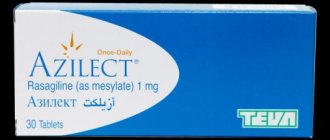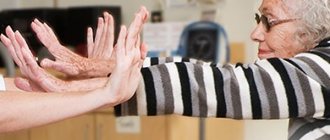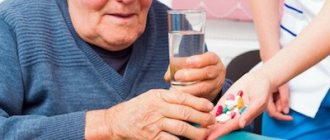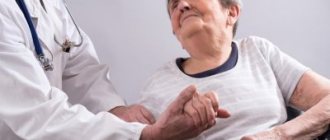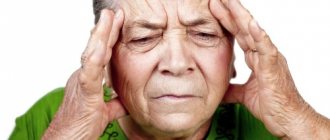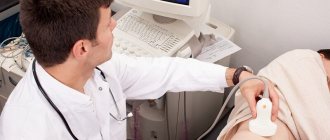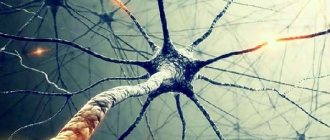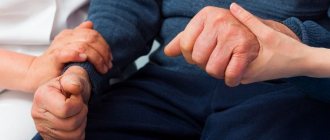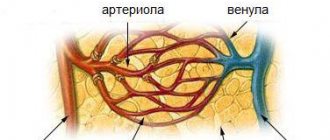American experts named five natural remedies for treatment.
It is well known that Parkinson's disease is incurable and steadily progressive. However, there are various drugs that help reduce the severity of symptoms and even slow down the disability of patients. are constantly working on experimental treatments for Parkinson's disease, and one of them is reprogramming neurons, as already. Here are five natural ways to take the development of this disease under greater control, according to experts at Elitedaily.com. Please note that the effectiveness of these products has been confirmed through scientific research.
1. Mucuna Pruriens (L-dopa).
This tropical plant is collected in Africa and parts of Asia, where it has been used as a traditional medicine since ancient times. The plant is especially beneficial because it is an adequate source of levodopa, considered a precursor of dopamine. And it is precisely this substance that victims of Parkinson’s disease lack. Numerous studies suggest that Mucuna Pruriens is an excellent tool for treating the symptoms of Parkinson's disease. Some scientists even believe that this plant is more effective than traditional medicines. Mucuna Pruriens not only helps prevent parkinsonism, but also improves the mood of its victims due to the additional production of dopamine.
2. Bacopa Monnieri.
A plant that is quickly gaining popularity and recognition among scientists, traditionally used in Indian medicine, and now in the West. It has a pronounced effect on a person's cognitive skills, including mood and memory. More importantly, scientists are evaluating Bacopa Monnieri as a tool for reducing neurological cell death in the dopamine system. As noted above, victims of Parkinson's disease lack dopamine because the brain cells that create this neurotransmitter are damaged. Bacopa Monnieri prevents such damage. By using the plant, it is possible to help patients reduce the degree of neurological deterioration and, at best, reverse some of the symptoms of Parkinson's disease.
3. Creatine monohydrate.
It is most often used as a dietary supplement by bodybuilders, but creatine has many more benefits. It is capable of treating some elements of Parkinson's disease. This substance protects the processes of dopamine production in the brain, so it is considered ideal for managing the symptoms of an incurable disease. Creatine is also a component of the human body created from within, and we consume it through animal products. Taking 2 to 5 grams of creatine monohydrate daily is an important addition in the treatment of Parkinson's disease.
4. Flavanols.
We all love dark chocolate, and having Parkinson's disease is another reason to actively consume it. Flavonols are an antioxidant-rich cocoa extract. Many of them directly affect the production of dopamine.
5. Fish oil.
Many people know about the benefits of containing Omega-3 fatty acids. But it also helps patients with Parkinson's disease. The fact is that these people often face problems, and fish oil itself has an antidepressant effect, regardless of any prescription medications. Although depression is not the main cause of concern in patients with Parkinson's disease, it is a common symptom that also needs to be addressed.
The number of people diagnosed with Parkinson's disease increases every year.
This is due to increased life expectancy.
Scientists are finding new ways to combat the disease in order to extend people’s working hours and reduce the risk of developing the disease.
Approaches to the treatment of Parkinson's disease
The disease has been known to mankind for many centuries, but it has not been studied and systematized. The characteristic signs of the disease in the form of tremor, specific gait and muscle rigidity were described by many ancient authors, including Galen. The disease gets its name from James Parkinson, an English physician who wrote An Essay on the Shaking Palsy in 1817. But full-fledged research began only at the end of the 19th – beginning of the 20th centuries.
In the middle of the last century, the role of dysfunction of the neurotransmitter dopamine in the development of the disease was revealed. The discovery influenced treatment methods. The first method was the use of belladonna alkaloids (atropine), which was used at the turn of the century before last. At the end of the 30s of the twentieth century, they learned to perform operations to destroy the basal ganglia, which brought tangible results.
Over the course of several decades, surgical treatment methods have been developed and constantly improved, but they remained the only effective means of combating the disease, except for the use of anticholinergic drugs. Their work was aimed at blocking acetylcholine, a natural neurotransmitter.
At the very end of the 20th century, encouraging attempts were made to treat using electrical stimulation of deep brain structures with impulses. These techniques were considered worthy of attention and further study for use.
But before the invention of a drug called Levodopa, drug treatment for Parkinson's disease was almost a hopeless endeavor.
Scientists have identified the role of acetylcholine in parkinsonism
Recently, treatment for Parkinson's disease has focused on increasing dopamine levels, which influence behavior and reward-based motivation, as well as movement. New research challenges long-held assumptions about the exclusive role of dopamine in this disorder.
In people with Parkinson's disease, the nerve cells that produce dopamine gradually die. Loss of dopamine results in slower movements, resting tremors, and other symptoms that worsen over time. To reverse parkinsonism, a collection of symptoms seen in Parkinson's disease, doctors offer treatments that increase dopamine levels in the part of the brain responsible for motor learning. However, medical treatments do not take into account the effect of parkinsonism on another neurotransmitter, acetylcholine.
Scientists previously believed that when dopamine levels fell, acetylcholine levels increased. However, this relationship has never been thoroughly investigated, despite the likely role of acetylcholine in the genesis of a movement disorder called dyskinesia, which develops in most patients after several years of dopamine treatment for Parkinsonism.
To investigate this question, the scientists studied healthy mice and mice genetically modified to create a model of parkinsonism with gradually decreasing levels of dopamine. The researchers observed that in healthy mice, the ratio of dopamine to acetylcholine remained in balance, and small changes in these chemicals did not have a significant effect on motor function.
In mice with Parkinson's disease, decreased dopamine reduces the activity of a small population of cells that are responsible for producing acetylcholine. While concentrations of both dopamine and acetylcholine decrease, the balance between these two neurotransmitters shifts in favor of acetylcholine. Under these conditions, as scientists have found, motor function in parkinsonism becomes dependent on both dopamine and acetylcholine.
These findings suggest that treating parkinsonism may require targeted treatments that restore the balance between these two chemicals, rather than focusing solely on dopamine, the researchers say. The study was published in the journal Neuron.
Drugs in the initial stages of the disease
If a patient is diagnosed with Parkinson's disease, treatment should begin as early as possible. Although the disease is currently considered incurable, early use of specialized medications helps to delay the appearance of negative signs as much as possible.
Levodopa has been considered the most common in recent years. But this effective remedy has a fairly large number of side effects, in particular, with long-term use of significant doses, the patient develops difficult-to-treat motor impairments.
Because of this, when deciding how to treat progressive Parkinson’s disease, many doctors prefer to use modern alternative drugs, for example, dopamine antagonists - Ropinirole, Pergolide, Apomorphine, Pramipexole and others.
If the patient is given these drugs at the first signs of shaking paralysis, then the use of Levodopa can be postponed to a later period, therefore, reducing the risk of developing motor disorders. However, dopamine agonist drugs themselves can lead to the same changes.
If the patient is over 70 years old, then the restriction on the use of Levodopa does not apply to him.
For use in the early stages of the disease, monotherapy is more suitable, that is, the use of one specialized drug to avoid the rapid development of side effects.
Treatment with drugs
Among neuroprotective drugs, the following groups should be distinguished:
- Antioxidants (including mexidol, glutathione, thioctic acid).
- Growth factors of nervous tissue (brain and glial growth factors).
- Calcium channel blockers.
- Dopa receptor agonists (are drugs related to both lines of therapy).
However, these drugs have not become widespread in the treatment of the disease due to the steady progression of all symptoms and insufficient data on the leading mechanism of development of the disease.
That is why symptomatic therapy is of leading importance in the treatment of Parkinson's disease. Drugs in this group make it possible to significantly (and in the initial stages completely) stop the manifestations of the disease, maintain the social activity of patients, and reduce the risk of complications. However, drugs in this group must be taken continuously throughout life.
There are five lines of symptomatic therapy, and each of them should be briefly considered.
- Increased production of endogenous dopamine. It is achieved by taking the precursor of dopamine - levodopa, because pure dopamine is not able to penetrate the blood-brain barrier. Levodopa preparations have been used in the world for more than half a century. Moreover, according to statistics, before the invention of drugs in this group, the life expectancy of patients was about 9-10 years. Now the life expectancy of patients, with adequate therapy and supervision, practically does not differ from that of the average population. Levodopa therapy currently plays a vital role in the treatment of the disease. There are dozens of drugs (the most famous are Naokm, Madopar, Stalevo, Duellin, etc.). Some limitation on the full-scale use of levodopa drugs is the frequent side effects. They can be divided into early and late:
— Immediately after taking the drug, side effects from the central nervous system, as well as other systems and individual organs, often develop. These can be headaches, visual disturbances, mood changes, constipation, hypotensive reactions and much more. As a rule, such manifestations are especially noticeable in the first days of prescribed therapy. In case of pronounced negative reactions, the dose should be reduced to a minimum and then gradually increased to the desired effect.— Late negative reactions appear 5-8 years from the start of treatment. Among them, violent movements, the effect of lack of dose, and dysfunction of dopa receptors are most often present. Sometimes persistent mental disorders develop, including the development of hallucinations. These effects require close attention from a doctor. Sometimes you have to give up the drug you are using, or reduce the dosage and switch to a combination of drugs from different groups.
- The second line of possible therapy is to stimulate the release of dopamine. The most commonly prescribed amantadine is 100-200 mg. Also, using drugs from this group, it is possible to stop many unwanted drug reactions that occur when taking dopa-containing drugs. The best effect is achieved with the rigid-tremorous form of Parkinson's disease. The drug should be prescribed carefully to patients with kidney disease; sometimes drugs in this group lead to the development of edema.
- The third treatment option is the use of dopamine receptor agonists (stimulants). Medicines in this group are classified into ergoline and non-ergoline agonists. Among the ergoline drugs, the most famous is bromocriptine, which has found greater use in gynecological practice, and is rarely used as a drug for the treatment of Parkinson's disease. Non-ergoline drugs are widely used, among them the following drugs should be noted: mirapex, pronoran, requip-modutab. The advantages of the drugs are their good effect on all symptoms of patients, the presence of a slight antidepressant effect. The disadvantages are relatively frequent side effects.
- Drugs that inhibit the reuptake of dopamine (cyclodol, akineton, etc.) are used relatively rarely. This is due to pronounced side effects, primarily from the mental sphere. Tricyclic antidepressants (the classic representative is amitriptyline) can be used as drugs of this type of action, if necessary.
- The drugs of the latter group inhibit the destruction of dopamine. Among them are the drugs selegiline, umex, entacapone. The latter, in turn, is used in the combination preparation stalevo.
Currently, the following drug therapy regimen has been developed: In the early stages of the disease, neuroprotection can be used as the only means of treatment. The prescription of symptomatic therapy for Parkinson's disease depends on age:
— If the patient is under 50 years of age, it is necessary to initially prescribe amantadine or a drug from the group of dopamine receptor agonists. - Age 50-70 years - treatment should be started with dopa receptor agonists or amantadine. — Age over 70 years is an indication for prescribing levodopa.
If the effect of monotherapy is insufficient, a combination of drugs is resorted to.
Neurosurgical treatment of Parkinson's disease is carried out when conservative therapy is ineffective, the appearance of motor fluctuations, drug-induced dyskinesias, and the rapid progression of manifestations of Parkinson's disease. The main type of intervention is the destruction of some structures of the thalamus and globus pallidus. Approximately 50% of patients note a persistent, pronounced positive effect, 25-30% experience slight positive dynamics, 10-15 percent do not notice an improvement in their condition, while the rest noted a deterioration, in some cases pronounced.
Medications in later stages
Drugs for progressive Parkinson's disease can also be used in monotherapy, but combination therapy is more often used:
- Levodopa is the main medicine at the moment.
- "Amantadine", which has an effect against Parkinson's disease and stimulates the production of dopamine.
- "Stalevo" and its analogues, which enhance the effectiveness of "Levodopa" and prolong its action.
- MAO-B inhibitors, for example, Rasagiline, which increases the concentration of dopamine and prevents its breakdown.
- Dopamine receptor agonists.
- Cholinotropic drugs.
Drug treatment is complemented by physiotherapeutic procedures, exercise therapy, classes with a speech therapist aimed at correcting speech and swallowing disorders, and psychotherapy for social rehabilitation.
Additionally, symptomatic and supportive medications are used to treat associated symptoms, for example, the essential amino acid phenylalanine. It is capable of being converted into tyrosine in the patient’s body, which is involved in the synthesis of dopamine.
A neurostimulator is also used for older people when they take Levodopa, but the body responds poorly to treatment. In this case, stimulation of deep brain structures is used with the destruction of some subcortical nuclei. This causes a significant improvement in the patient’s condition, a retreat of severe symptoms, and an increase in the person’s socialization. The doctor can reduce the dosage of drugs for Parkinson's, which will reduce negative symptoms and make the patient's life easier.
Using a stimulator is much simpler and safer than using electrodes in classical forms of intervention. The operation takes less time and only one small hole is made in the skull. An antiseptic is used for treatment, and an antimicrobial drug is given to prevent infection. There is always a risk, but with such jewelry surgery it is minimal. The only obstacle is the high cost of the operation.
The use of a neurostimulator does not exclude the use of other treatment methods, including medications, and the most advanced techniques that are under development - genetic engineering and stem cell therapy, the use of special viruses, impulse stimulation of neurons. The patient must be aware that improvement in condition does not mean complete recovery, that he still needs to be treated and monitor his health.
Detailed list of medications for Parkinson's disease
Degenerative brain damage is accompanied not only by movement disorders. It is characterized by a large number of accompanying symptoms. Specialized medications alone cannot solve all problems. The approach to therapy should be comprehensive and multidirectional.
Brain damage is accompanied not only by movement disorders.
A complete list of medications used for Parkinson's disease:
- Levodopa is the main medicine that is converted into dopamine in the body. In addition to the base product, the doctor can prescribe “Nakom”, “Madopar”, “Stalevo”;
- antioxidants – prevent massive death of neurons under the influence of free radicals and toxins. Patients are advised to take Mexidol, Glutathione, and various dietary supplements;
- sleeping pills - allow you to normalize the daily routine, improve the quality of sleep, improving the general condition of the patient. If possible, therapy is limited to herbal teas and infusions, amino acids. In severe cases, Melatonin, capsules or Fitosed tincture are prescribed;
- vitamins - the complex is selected by the doctor in accordance with the characteristics of the case. Most often, the emphasis is on vitamins B3, C, D, E. Many patients are additionally prescribed supplements with iron;
- analgesics - designed to eliminate chronic pulling, tingling or burning sensations in the muscles. Typically, ibuprofen-based drugs are used to alleviate the patient's condition.
Medicines will give maximum effect if they are supplemented with massage and physiotherapeutic procedures. Good results are observed when combining traditional medicines with traditional medicine.
The number of drugs for Parkinson's is increasing every year. On the one hand, this makes it easier to select individual therapy, on the other hand, it confuses doctors and patients due to the abundance of options. Most often, neurologists start with standard, practice-tested schemes, making adjustments to them as necessary.
Side effects of treatment
Since the main treatments for Parkinson's disease are drugs that restore dopamine levels, side effects are mainly caused by the use of Levodopa and other drugs with similar effects.
The tablets have an excellent effect on severe tremors, muscle rigidity and limited mobility, which causes real euphoria in many patients at the beginning of use. However, this remedy has virtually no effect on balance disorders and gait stiffness.
Moreover, long-term use of Levodopa or its high doses lead to the development or intensification of dyskinesias - sudden involuntary and uncontrolled movements, twitching, twisting of limbs. Anticonvulsants in such cases are useless or ineffective.
Levodopa can cause many negative symptoms. These include the following:
- nausea;
- vomit;
- constipation;
- hypotension;
- high nervous excitability, irritability.
Because of this, doctors prefer not to prescribe Levodopa in the initial stages of the disease, but to make do with other drugs that increase dopamine levels. The same is used if this particular medicine is contraindicated for the patient.
How to get free pills
Preferential categories of citizens of the Russian Federation can receive free medications for treatment. The category of beneficiaries includes disabled people, participants in the Great Patriotic War, and victims of the Chernobyl nuclear disaster.
In accordance with legislative documents under federal benefits, they can receive anti-Parkinsonian drugs free of charge.
Free medications are issued according to a valid prescription from the attending physician. Dispensing is carried out only by pharmacies that have entered into an agreement for reimbursement of costs with the pension fund.
Drugs in the treatment of Parkinson's disease must first of all replenish the missing dopamine in the patient's body.
But the severity of the disease requires the prescription of auxiliary medications - sleeping pills to normalize sleep, painkillers to alleviate the severe conditions of patients.
The maximum treatment effect is achieved by taking vitamins and antioxidants.
Neurosurgical operations, physical therapy, psychological assistance, diet, and exposure to medical devices are also used to treat the disease.
Possible reasons for decreased effectiveness of therapy
As Parkinson's disease progresses, prescribed pill treatment may become less effective over time. The disease increasingly affects the body, less dopamine is produced, and the drugs used do not cope with the situation.
Due to the large number of side effects and a decrease in the effectiveness of treatment with one drug, in recent years, Levodopa in its pure form is rarely used. Most often, its combination with dopadecarboxylase inhibitors is used for therapy. These are drugs such as “Nakom”, “Madopar” or their substitutes.
“Midantan” (amantadine) and its analogues are also used: “Viregit”, “Symmetrel”, dopamine receptor stimulants - “Parlodel”, “Mirapex”, “Apomorphine” and others. In the treatment of Parkinson's disease, not only the use of pills and surgery, but also lifestyle changes play an important role. The patient needs to eat properly to avoid the side effects of medications, give preference to vitamin-rich foods, and reduce protein intake in the morning.
They play an important role in helping to restore limb mobility and strengthen muscles. There is also a free method - walking and a positive attitude, which depends on the support of the patient from family and friends.
Symptomatic therapy includes the use of painkillers for painful movements, sleeping pills for sleep disorders, sedatives for high excitability and aggressiveness, irritability, and depression.
There are no trifles in the treatment of Parkinson's disease, since it affects the main organ - the human brain. To improve your health, it is important to maintain a good vascular system.
It is not yet possible to cure the disease, but with the use of all the achievements of modern medicine and complex effects, it is possible to prolong the patient’s life and improve its quality.
Parkinson's syndrome is a complex, chronic disease that causes disturbances in the nervous system and motor function. Worldwide, there are about 1% of patients with parkinsonism, in 90% of cases these are people over 60 years of age. The pathology is progressive in nature, and therefore requires early diagnosis and timely treatment. Therapy, which is started at the initial stage, allows you to delay clinical manifestations as much as possible and allow the patient to continue to live a full life.
Unconventional methods for treating shaking palsy
Adherents of these methods of healing will be pleased to hear about the positive effects that acupuncture methods have.
There are provisions of Eastern medicine according to which any disease has its roots in an imbalance of energy flows in the body. Even serious pathologies are no exception.
Scientists at the University of Arizona conducted a study: patients with Parkinsonism underwent a course of acupuncture treatment.
In comparison with patients undergoing the classical course of treatment, the coordination of the subjects improved by 31%, step length by 5%, and walking speed by 100%.
Japanese scientists have discovered the positive effects of vitamin D3.
It is able to slow down the rate of development of the disease and reduce the destructive processes occurring in the brain.
Among the non-traditional methods we should mention the development of specialized high technologies. Google programmers created a program that reminds the patient that it is time to take their medicine. This program is able to take into account the state of coordination, reminds you of the need to swallow saliva, and changes your body position to prevent freezing.
In case of Parkinson's disease, therapy with folk remedies is not prohibited. — a selection of proven effective recipes.
You will find everything about treating Parkinson's disease at home. Nutrition system, physical exercise, breathing training, etc.
Types of drug therapy
As with any other disease, Parkinson's syndrome requires systematic drug treatment. The selection of drugs should be carried out individually based on the stage of the disease, severity, age of the patient and clinical manifestations. The main goals of the upcoming treatment are to relieve the symptoms of the pathological process and restore the synthesis of dopamine to prevent the death of still healthy neurons. The problem with all medications in the fight against this syndrome is addiction to the drugs, which leads to an increase in the dose and power of the drug. For this reason, in the early stages, the doctor tries to prescribe the minimum dosage, gentler medications, and combine them with each other in order to achieve maximum effect and minimal harm.
Therapy for late stage disease
In the later stages of the disease, symptoms rapidly increase. This requires increasing the dosage of medications taken. Most specialists prescribe the maximum therapeutic dose of medication. The use of DOPA-containing drugs is recommended only if other drugs that are used in the maximum dosage are ineffective.
In the later stages of the pathological process, it is recommended to simultaneously take Levadopa and DOPA decarboxylase inhibitors. Patients are recommended to take Nakoma, Madopara, Stalevo. Initially, patients are recommended to take the minimum dosage of the selected medication.
One tablet per day is recommended. If the drugs are insufficiently effective, a gradual increase in dosage is recommended . If you take dopaminomimetics and Levodopa at the same time, the amount of the latter can be significantly reduced.
It is recommended to adjust the amount of DOPA-containing medications if, with worsening symptoms, a person’s household and social activities are significantly reduced. A decrease in the good therapeutic response to medications with levodopa is observed after 3-4 years of use.
The effect of antiparksonian drugs is reduced for a variety of reasons:
- Dopaminergic nerve cells die.
- Intestinal absorption of levodopa decreases, as it competes with other amino acids.
- Dopamine competes with false neurotransmitters for receptors.
- Dopamine receptors are desensitised.
- The expression of dopamine receptors decreases during postsynaptic termination.
- The ability of neurons in the substantia nigra to synthesize dopamine becomes thinner.
If the effectiveness of a particular medicine decreases, it is recommended to replace it with an analogue. The selection of a specific medicine should be carried out by a doctor after conducting appropriate diagnostics and assessing the individual characteristics of the patient.
Levodopa
Antiparkinsonian medication, which is considered the best existing today, effectively combats such clinical manifestations as:
- muscle stiffness;
- salivation;
- tremor;
- hypokinesia;
- dysphagia.
Patients note an improvement in their well-being 6-8 days after starting to take levodopa, the maximum effect is observed after 25 days. More often, drugs are combined with medications such as carbidopa, benserazide, which makes it possible to reduce the required dose of levodopa, thereby reducing possible side effects. Levodopa tablets are taken with meals, 2-3 times a day; the drug is discontinued only gradually.
It is undesirable to take funds from this group in the following cases:
- glaucoma;
- chronic liver and kidney failure;
- psychoses;
- melanoma;
- stomach ulcer;
- bronchial asthma;
- history of heart attack.
The drug has many side effects, the main ones are:
When taking levodopa, it is important to eat a certain type of diet with a reduced amount of protein, as it interferes with the absorption of dopamine.
Pronoran
The active substance of the drug is piribedil, it is used in the treatment of early and late stages of parkinsonism. Pronoran improves motor function and alertness. Pronoran is indicated both in monotherapy and in combination with levodopa medications; tablets are taken after meals, washed down with plenty of water, three times a day.
Pronoran is contraindicated in the acute phase of a heart attack, individual intolerance to the components and in combination with antipsychotics. Pronoran, like levodopa, has many side effects:
- nausea;
- flatulence;
- hallucinations;
- confusion;
- drowsiness;
- dizziness;
- arterial hypotension;
- instability of blood pressure.
Pronoran practically cannot cause an overdose, since in this case vomiting occurs and the substance is not absorbed into the blood. Pronoran is initially prescribed at a dose of 50 mg. per day, gradually increasing the amount if necessary.
New in symptomatic therapy
As already mentioned, the work here is aimed at reducing the side effects of levodopa, the reason for which is its sharp fluctuations in the blood and central nervous system due to its short half-life. Various methods are considered to maintain constant concentration. For example, a device is being developed, the basis of which is a percutaneous catheter into the cavity of the jejunum, where levodopa in the form of a gel is supplied evenly in small doses. This makes it possible to ensure its constant concentration in the blood and, as a result, the central nervous system, and to eliminate such side effects as “switching off” (akinesia due to low levels of the drug in the blood) and hyperkinesis due to its high concentration. The introduction of the device into clinical practice is expected in 2017-2018.
A long-acting form of L-DOPA, with a half-life of 6-8 hours, is undergoing final trials in Europe. This drug is already available in the United States under the trade name Rytary (cabridopa + levodopa). Another advantage of this remedy is that it is absorbed not only in the duodenum, but also in the jejunum, which means that its entry into the blood is less dependent on accompanying food intake.
See also:
- Causes and treatment of Parkinson's disease
- Kidney failure in old age
- Rehabilitation after hip replacement
We have compiled a table of drugs that have recently appeared in this area, or those that are in the final stages of development.
Please note that this table should under no circumstances be used as a recommendation for self-prescription of therapy.
| Active substance | Trade name | Manufacturer | Direction of action | Operating principle | Development stage | Comments |
| Melevodopa + Carbidopa | Sirio | Chiesi | Movement disorders | Modified form of levodopa | Approved for use | Sold in Italy |
| Opicapon | Ongentys | BIAL | Motor fluctuations when taking levodopa | Catechol-o-methyltransferase inhibitor, slows down the inactivation of levodopa, used in conjunction with it | Approved for use | In the EU it is included in the treatment reimbursement program |
| Safinamide | Xadago | Zambon | Motor fluctuations | Monoamine oxidase inhibitor: increases dopamine concentrations at synapses | Approved for use | In the EU it is included in the treatment reimbursement program |
| "XP066" | Rytary | Impax | Motor fluctuations | Devodopa + Carbidopa 1 in 4 long-acting sustained release | Approved for use | In the USA, it is included in the medical reimbursement program |
| Amantadine sustained release | — | Adama | Motor fluctuations | Long-acting N-methyl-D-aspartate receptor antagonist, reduces the severity of motor disorders | Phase III clinical trials have been completed (randomized multicenter study on a large population) | Registration expected in 2017-2018 |
| Droxidopa | Northera | Lundbeck | Motor and non-motor disorders, neurogenic orthostatic hypotension | Norepinephrine precursor (neuroprotector) | Approved for use in the USA, Japan | |
| Istradefillin | Nouriast | Kyowa-Hakko- Kirin | Motor fluctuations | Antagonist of adenosine 2A receptors of striatopallidal pathways | Approved in Japan, phase III clinical trials are underway in Europe | |
| Tozadenant | — | Biotie | Motor fluctuations | Adenosine 2A receptor antagonist | Phase III in progress | |
| Pimavanzerin | Nuplazid | Acadia | Dopamine-induced psychoses | 5HT2A serotonin receptor inverse agonist | Phase III with positive results; Approved for use in the USA |
Another direction in the search for new means of symptomatic therapy is the use in the treatment of Parkinson’s disease of drugs developed for the treatment of other pathologies. These include, for example, Donepezil, which is approved for the treatment of Alzheimer's disease. It is currently in Phase III clinical trials to determine whether the drug can reduce postural instability and gait disturbances in Parkinson's disease. Duloxetine, used to treat severe pain and depressive disorders, is being studied for its ability to relieve pain in Parkinson's disease. The same indications (pain relief) are now being studied for the drug Naloxone, used to treat opiate poisoning.
Amantadine
Another drug in the fight against Parkinson's syndrome is not effective only in the medicinal form of the pathology. Actively fights movement disorders, in particular tremor.
Has contraindications:
- glaucoma;
- epilepsy;
- thyrotoxicosis;
- stomach ulcer;
- pregnancy;
- pathologies of the kidneys and liver.
Side effects may include:
- urinary retention;
- nausea;
- arrhythmia;
- dry mouth;
- swelling;
- blurred vision;
- hallucinations;
- deterioration of attention.
Amantadine tablets should not be taken with alcohol, and abrupt withdrawal of the drug should be avoided.
Deep brain stimulation
A neurosurgical technique that is actively used in developed countries. Electrodes are implanted into some brain structures, which, using electrical impulses, stimulate those neurons that would normally be stimulated by dopamine. The frequency and intensity of the impulses are selected individually, depending on the nature and severity of the disorders that need to be corrected. The operation does not allow you to completely stop taking medications, but their dosage - and, therefore, side effects - is greatly reduced (to what extent - also needs to be decided individually with the attending physician).
For those who are thinking about this operation, it is important to remember that it is effective against movement disorders, mental changes (depression, sleep disorders, etc.) it does not correct or corrects only slightly.
Bromocriptine
This medication stimulates receptors to produce dopamine and suppresses the secretion of prolactin. Just like Amantadine, it is effective for all forms of the disease, except drug-induced parkinsonism. Contraindicated for people with mental disorders, pregnant women, people with serious disorders of the gastrointestinal tract and children.
The side effects are similar to those of the drug pronoran. It is taken either alone or in combination with levodopa; the dose of the latter can be reduced when combined.
Non-drug rehabilitation methods
Or physiotherapeutic techniques.
To date, more than 30 studies have been published proving the effectiveness of non-drug rehabilitation methods: speech therapy classes, dancing and even boxing (of course, in a non-contact fitness version). Exercises that combine movements with sound (rhythmic music, metronome, clapping) are useful. A patient was described who threw a coin in front of him to overcome “freezing” while walking.
Specific methods—and non-drug methods also require methodological development—are still in the works. However, this information can be taken into account now, not only by adding physiotherapy and exercise therapy to treatment, but also by encouraging the patient, if possible, to expand physical activity instead of confining himself within four walls. The more active the brain is, the slower it degrades - this principle applies to any neurological disorders.
Pramipexole
As a stand-alone remedy, it is effective in the early stages of the disease; in later stages, it is recommended to take it in combination with levodopa. It has no contraindications other than pregnancy, breastfeeding and personal intolerance.
Side effects noted:
- constipation;
- dry mouth;
- vomiting;
- dyskinesia;
- mental disorders;
- drowsiness;
- swelling.
It is well tolerated with many types of drugs, including levodopa and pronoran, except for dopamine antagonists, the latter reduce the effectiveness of pramipexole. The dose is increased gradually, taken three times a day, and the drug is discontinued gradually.
Non-drug treatment
In addition to pills, the doctor may recommend exercises for parkinsonism, a gymnastics complex, diet, massage, and physiotherapy. How are non-drug methods useful? Is it worth spending time on it?
How it will help:
- Training reflexes and stereotypic movements allows you to slow down the progression of the disease;
- The patient remains active for a long time and can take care of himself;
- Exercise therapy and group exercises relieve internal tension and discomfort, the patient does not feel lonely and helpless;
- The psycho-emotional background improves;
- During massage, blood circulation in the muscles is restored, pain sensitivity and spasm are reduced.
What won't help:
- Parkinson's disease and parkinsonism: treatment and medications must be taken continuously. Without pills, additional therapies are not effective;
- In case of primary pathology, no methods will help stop the progression of the disease, only slow down the process;
- In case of secondary syndrome, some non-drug methods are contraindicated (for tumors - massage and physiotherapy).
Homeopathic methods, unfortunately, do not have proven results. The effectiveness of drugs directly depends on the patient’s trust in the doctor. But the placebo result can also be quite high. Treatment of parkinsonism syndrome with homeopathic remedies is permissible in combination with basic therapy. In folk therapy, the herbs of rose hips, chamomile, lemon balm and mint are used. They reduce the severity of the side effects of levadopa.
- Rank method for parkinsonism (there are specialized clinics in Russia and China; the method is not used in Europe);
- Vaccine PD01 2011 (the first phase of testing was completed in 2020);
- Application of stem cells 2009;
- Introduction of GDNF (neurotrophin drug) 2020
The RANC method is used to restore the activity of brain centers that are affected by Parkinsonism syndrome. What kind of method is this? The doctor injects irritating drugs (magnesia) subcutaneously. Injections are performed into the trapezius muscle and other points determined by a specialist. As a result of the drug’s effect on the triggers, centers in the brain are activated, tremors and the severity of involuntary movements are reduced. Treatment of parkinsonism in St. Petersburg, Krasnodar and many other cities of Russia is carried out using this method.
- the effect of therapy is short-term;
- the method has no evidence base;
- The course of treatment is unreasonably expensive.
Research into telomeres and their role in the development of degenerative brain diseases continues. This is a promising method that can be applied in the future.
Selegilin
The main indication for use is Parkinson's syndrome and its various forms, except for the drug. Able to delay the initiation of levodopa, but there is no information about the possibility of delaying the progression of the disease. It should be used with caution in case of gastric and duodenal ulcers, angina pectoris and mental disorders. Strictly prohibited for glaucoma, prostate hyperplasia and arrhythmia.
May cause:
- skin rash;
- increased activity of liver enzymes;
- urinary retention;
- agitation;
- dry mouth;
- loss of appetite;
- nausea and vomiting.
You should be careful when taking it together with levodopa, as selegiline can increase the side effects of the latter and also increases the risk of death. The drug should be discontinued gradually; abrupt cessation of use contributes to an increase in the clinical picture. Should be taken twice a day, morning and afternoon.
Tolcapon
It increases the therapeutic effect of levodopa, is quickly absorbed and begins its effect within a few hours.
Indications:
- Parkinson's syndrome.
Side effects:
- diarrhea;
- insomnia;
- anorexia;
- dyskinesia;
- nausea.
It is canceled gradually, otherwise neuroleptic syndrome may occur. The minimum dosage is 100 mg. three times a day, later, it is possible to increase a single dose to 200 mg.
Entacapone
Indications: Parkinson's syndrome, when therapy with other medications is ineffective.
Contraindications:
- heart failure;
- pregnancy, breastfeeding;
- children under 18 years of age;
- liver failure;
- hypersensitivity to the components of the drug.
- Common side effects include:
- headache;
- increased feeling of anxiety;
- hallucinations;
- increased sweating;
- falls;
- insomnia;
- asthenia.
It should not be taken simultaneously with MAO-A and MAO-B inhibitors, and the production of liver enzymes should also be monitored.
Central anticholinergic agents
The main indication for use is Parkinson's syndrome. This group is less effective than levodopa, but in the first stages with minor symptoms, therapy can be started with anticholinergics. There is a moderate effect in relieving symptoms such as tremor and muscle rigidity. They have no effect on bradykinesia. Particular caution should be taken when taking medications in old age, as they can enhance cognitive manifestations. One of the main medications in this group is Trihexyphenidyl; it effectively affects the syndrome, including drug-induced parkinsonism. Contraindicated in dementia, pregnancy, intestinal obstruction and glaucoma.
Side effects:
- attention disorders;
- tachycardia;
- dizziness and headache;
- dry mouth;
- decreased visual acuity;
- increased irritability.
Attention! With long-term use, drug dependence on the drug may occur.
Biperiden is similar in its indications and side effects to Trihexyphenidyl, the only difference is that it can cause drowsiness and lower blood pressure. In patients with epilepsy, it can provoke new seizures. Take twice a day.
The modern pharmacological industry offers a wide selection of drugs in the fight against parkinsonism. Unfortunately, none of them is able to completely get rid of the pathology. The syndrome progresses in any case, the task of medications in this case is to make this process as slow as possible. And also help the patient continue to lead his usual lifestyle for as long as possible. Drug therapy in combination with auxiliary procedures, faith in the patient’s recovery and support from loved ones is the key to successful treatment and long life!
Reading strengthens neural connections:
doctor website
Parkinson's disease
Parkinson's disease is one of the most dangerous neurodegenerative diseases. In terms of prevalence, it ranks second (Alzheimer's disease is first).
The danger of the disease is that it progresses slowly but inevitably. At the moment, there are no treatment methods that could cure the disease completely, but with the right selection of drugs, it is possible to prolong the patient’s life and improve its quality.
At the moment, the exact causes of this disease have not been established and there are no specific preventive measures that would help avoid this disease. Experts say that heredity plays an important role in the development of parkinsonism.
People whose relatives have had the disease are more likely to experience it. Poor ecology, diseases and infections of the brain, and brain injuries also have an impact. Only in 20% of cases parkinsonism develops against the background of other diseases. In other cases, the disease occurs independently and without any apparent reason.
There are currently pills for Parkinson's that help slow the progression of the disease. Parkinson's disease affects the nervous system, causing the death of neurons responsible for the production of dopamine, an essential neurotransmitter. The drugs activate the production of dopamine and slow down the development of symptoms.
Parkinson's disease progresses slowly and may go unnoticed in the initial stages.
Often the patient does not pay attention to the symptoms and begins to suspect the disease only after the appearance of the most characteristic feature - impaired motor function.
Characteristic symptoms of Parkinson's disease are:
- Neurological initial symptoms. In the first stages of the disease, increased sweating appears, which is in no way related to the ambient temperature or physical activity of the person. The skin becomes oilier and saliva begins to be actively produced.
- Hypokinesia. The patient's movements become slow, he cannot control muscle strength, his steps become short, and his handwriting becomes small.
- Rest tremor. First, trembling appears on one side of the body, then on both sides, trembling of the head.
- Rigidity. Rigidity manifests itself in increased muscle tone. The limb is difficult to bend or straighten with the help of an external force.
- Postural instability. While moving or walking, it is difficult for the patient to maintain balance. In combination with rigidity, this symptom leads to the patient often falling.
Parkinsonism shares features with other neurodegenerative diseases. In the early stages, differential diagnosis is very important in order to develop an effective treatment regimen.
Latest Treatment Methods
Medications used in the treatment of pathology, in some cases, cause the development of side effects. Today, doctors more often prescribe to patients drugs for the treatment of Parkinson's disease based on Amantadine and Levodopa with an improved formula. Among the most effective medications of the new generation are:
- PC-Merz. This Parkinson's medicine comes in the form of a solution. Used for intravenous administration.
- Madopar. These are capsules and tablets for Parkinson's, which reduce the severity of the clinical picture of the pathology that develops against the background of disruption of the internal organs.
- Madopar GSS. It is used to obtain a quick effect, which is 2 times faster than the standard version of the drug.
In the absence of the effect of conservative treatment methods, patients with this pathology are prescribed neurostimulation surgery. This is a minimally invasive intervention in which electrodes are inserted into the patient’s gray matter of the brain, activating the work of nerve cells and dulling the clinical manifestations of the disease.
Almost always, selected methods of conservative treatment of the disease eventually cease to provide the desired therapeutic effect. The etiology of this is not fully understood. The most likely theories are:
- mass death of the structures of the substantia nigra, which depend on dopamine;
- desensitization of cells to neurotransmitters;
- violation of the instructions of the attending physician and the rules for taking prescribed medications;
- concurrent use of other drugs that reduce the effect of the main drugs;
- regular consumption of alcoholic beverages and smoking tobacco products.
Treatment of Parkinson's disease is a long and labor-intensive process that does not allow you to completely get rid of the disease and eliminate the clinical picture. But with timely and adequate therapy, as well as compliance with all instructions of the treating specialist, it is possible to significantly slow down the progression of pathological processes and delay the development of severe disorders.
Related topics:
- Deposit insurance list of banks When do individuals need deposit insurance? The responsible guarantor of payments, which was appointed by the state, is the DIA (agency...
- Particularly serious crimes list Grave crimes according to the Criminal Code of the Russian Federation - what is it? In the Criminal Code of the Russian Federation, all crimes are classified according to...
- List of train passengers Search for a ticketThe service for selecting prepaid meals is available to passengers of trains formed by JSC FPC and passengers of the Sapsan train. If…

